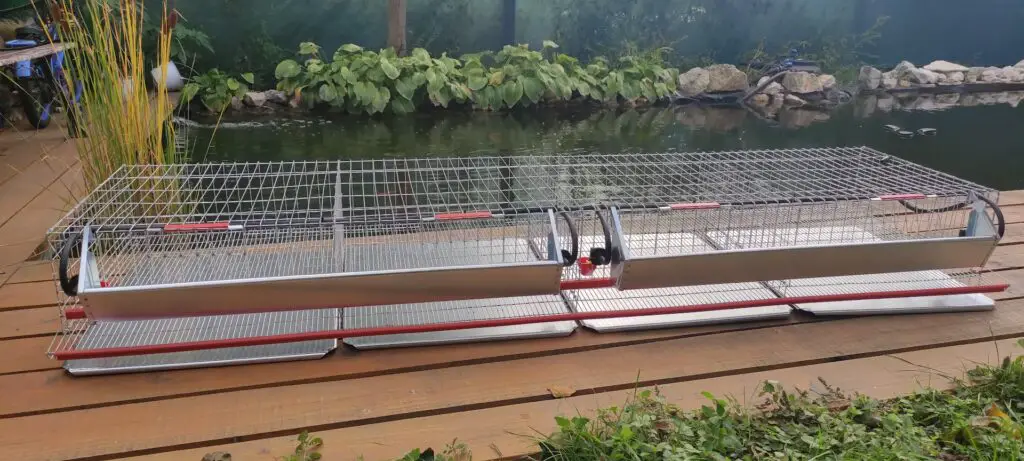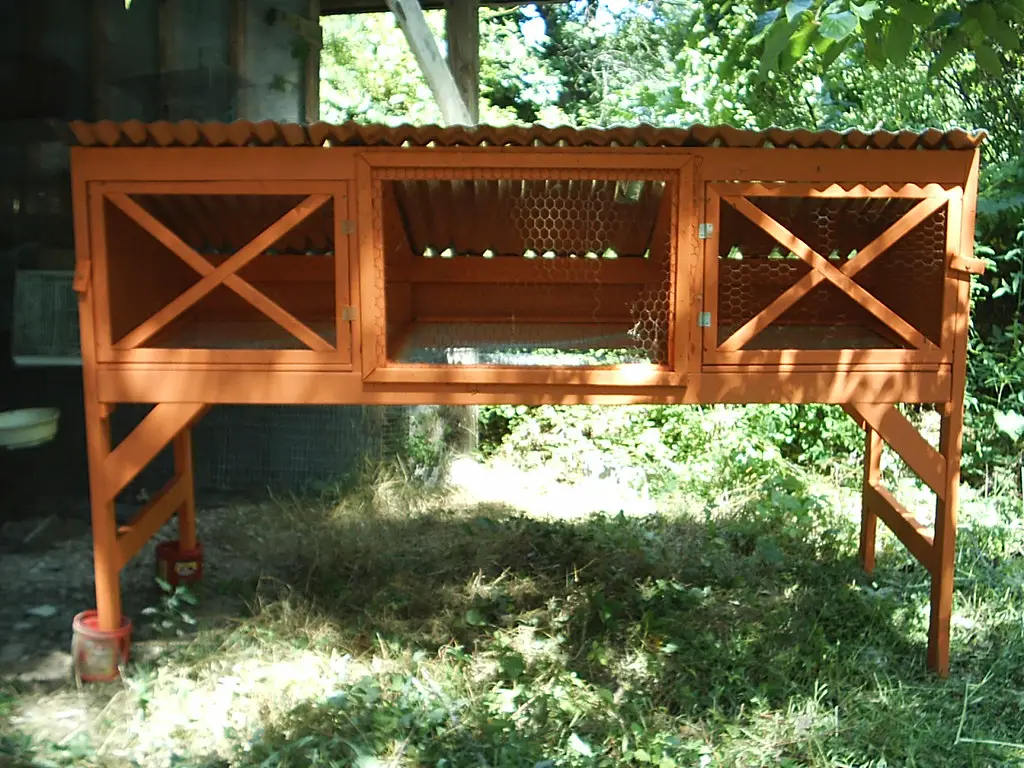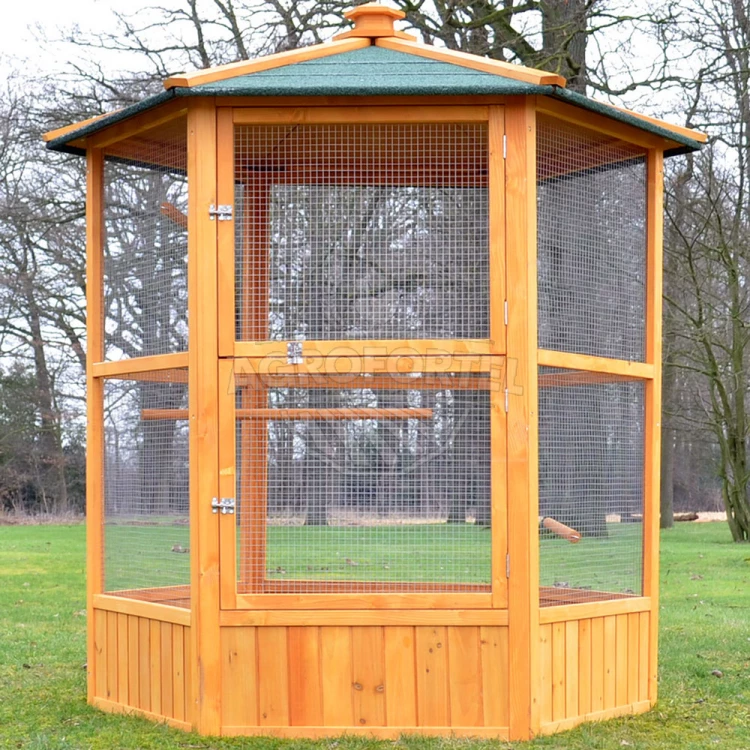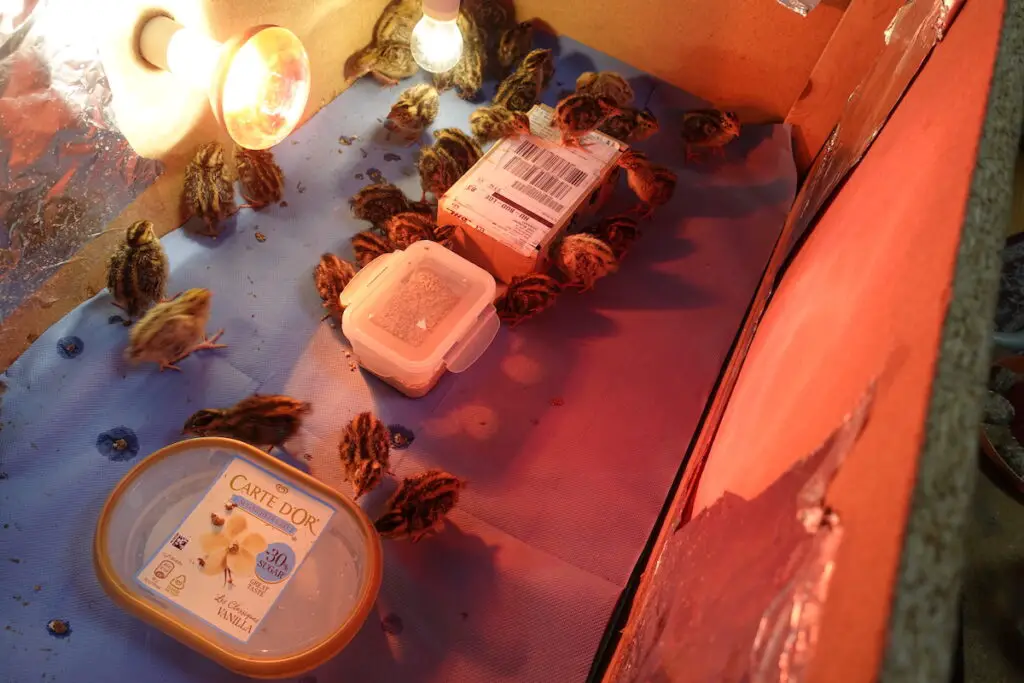If you want to keep animals at home not only as pets but you want to benefit from them, keeping quail is an excellent first choice. Whether it’s for eggs or meat, quail is a great animal to start raising in your homestead.
Quails are easy to raise and maintain because they are inexpensive to buy and feed. They require less space than chickens, and they are quieter too. They resist cold very well and can be kept indoors and outdoors as well. When kept clean and fed well, quail hens will lay an egg a day.
There isn’t a single perfect way to raise quail; depending on your situation, climate, and the season of the year, you need to figure out what works best for you.
Let’s see the three most important basics you need to have to raise your own quail at home: shelter, food and water, and cleanliness.
Learn how to raise your own quail and have an unlimited supply of eggs and meat.
Shelter
Quail are at the bottom of the food chain, and their survival is in numbers. They reproduce easily, but they have many predators. The number one way of taking care of them is by protecting them from rats, snakes, dogs, and other animals that may harm them.
They can be kept in an aviary outdoors, but the easiest way to keep them sheltered is in an enclosed cage.
You can buy cages, or you can make one for your birds. It’s a fun DIY project you can do with your children as well. I found many used quail cages in my vicinity on Facebook Marketplace and other local sites too.

Indoor cages
This is probably the most common type of cage as most people who want to keep quail have a garage or a shed where they can keep their birds.

Pros of indoor cages
- Your quail enjoy double protection. They aren’t directly exposed to the elements. Whether it’s wind, hail or snow, your birds are kept indoors.
- Protection from predators. As long as you keep the cage in a safely closed building, you also protect them from being attacked by other animals.
- You can have an egg roll-out cage. This type of cage requires a small opening so the eggs can roll out. It’s quite convenient for collecting eggs every day. You don’t need to worry about snakes or smaller animals climbing through the hole.
- Easier to keep the water above freezing point. In some climates, the weather gets very cold in the winter, and giving the quail fresh drinking water is challenging. It’s much easier to provide them with water in a closed barn where it stays above freezing point even if the outside temperature gets very cold.
Cons of indoor cages
- They need to be cleaned regularly. Even if you construct a cage with a poop tray to collect the quail droppings, you need to empty this on a regular basis.
- Mess. Quail are quite messy when it comes to eating. Even if you use a Tupperware container to feed them, you will find some food waste around the cage, which leaves you with some cleaning-up to do around the cage.
- Smell. Quail aren’t as stinky as pigs, but they do have a distinct smell, which some people don’t like. If you keep them indoors, this can get pretty intense and unpleasant to some.
- If there is no natural light in the garage, you need to provide your quail with light. If you keep them for eggs, they need about 14 hours of light a day. You can solve this with a timer.
Outdoor cages
If you don’t have enough room in your garage or shed, but you have a garden, you can also keep your quail outdoors. They are considered wild birds, after all.
Outdoor quail cages have some advantages that indoor cages don’t, but they also have their own challenges to consider.

Pros of outdoor cages
- It’s easier to keep clean. If you have a cage with a hardware cloth bottom, you don’t need to worry about a poop tray. You can collect all the quail droppings under the cage for months and then use them as composted fertilizer.
- You don’t need to worry about the smell or the mess nearly as much as with an indoor cage.
- Your neighbors will barely notice. It’s not strictly speaking an advantage, but if you’re concerned about your quail bothering your neighbors, you don’t need to be. They are quiet most of the time, and even when they are noisy, they sound more like singing birds. They are much quieter than chickens.
- You don’t need to worry about installing lights (at least from spring to autumn).
Cons of outdoor cages
- Harder to keep secure from predators. You can’t control what comes near the cage and tries to snap your quail as well as you can when they are kept indoors. This is why it’s recommended not to leave openings where other animals can sneak in.
- Roll-out cages are pretty much ruled out, so you have to open the cage door to collect the eggs. If the cage is too high or too wide, it may be harder to reach the eggs.
- Protection from the elements. Quail are hardy birds, but they need some level of protection from wind, snow, excessive direct sun, and rain. If you keep them outdoors, provide them with a roof, at least. If you get lots of cold wind as well, install a wind-sheltered part.
- Water in winter. If the temperature drops below freezing point, you need to find a way to give your quail fresh water throughout the day. You can do this by bringing out fresh water a few times a day or by installing a heated water fountain.
- Egg production goes down or stops altogether in winter because of a lack of sunlight. You can install a light source if you want them to lay throughout the year.
Quail aviary setting
If you have a large enough garden and you want to create a habitat for your quail that most resembles their natural habitat, you can consider setting up a quail aviary.

Pros of quail aviary
- You keep your quail in as natural a habitat as you can.
- They are free to move around and even take flights.
- Quail hens may go broody and hatch their own eggs.
- Dealing with quail droppings is not as regular as with indoor cages.
Cons of quail aviary
- There is a higher upfront cost to build it.
- You need more dedicated space in your garden.
- It’s harder to protect your birds from predators.
- Although cleaning is less frequent, it is a bigger time commitment to rake and keep the soil clean.
- Every time you collect eggs, you’re on an egg-hunt.
- Unless you install additional light, your hens will not lay eggs in the winter when the days are shorter.
Food and drink
Besides providing shelter, you must also ensure that your quail have access to food and water. This is as important in the first days as it is when they are fully grown.
Quail eat, on average, about 40 g of food per day. For a covey of 20 birds, you need to consider approximately 800g (about 1.5 lb) per day or 24kg (about 53 lb) of food per month.
If you develop a good system, you can feed them and give them water with very little input on your behalf.
There’s no need to overthink it. When you’re getting started, you can even use a cardboard boxes and ice cream boxes for food and water.

Feeding system
You must know that quail are very messy eaters, and they produce an awful amount of food waste when eating unless you do something to prevent it. They grab some food in their beak and shake their heads in the process in such a way that they spill food all over the place.
The cleanest way to feed quail with virtually no waste is by using a large Tupperware box with some holes cut into it. This way, the quail have to stick their head inside the box to reach for food, and as they shake it, all the spillage stays in the box.
The downside of such a feeding solution is that the capacity is somewhat limited, and you need to remove the box to fill it up. It’s probably not a deal breaker, and you can get large boxes.
I love this solution so much that I use it even for my baby quail as soon as they turn about 6-7 days old.
You can also use a chicken feeder, but this is messier and creates a lot more waste.
Another solution is a J-style feeder that can be filled up from outside the cage. You can place a lot of food in this feeder, but it’s not as good at containing waste as Tupperware unless you place some extra protection that catches wasted feed that falls off.
Drinking system
Quail also drink a lot of water. I can keep almost 40 baby quail in my brooder box, and after just a few days, they drank a quarter of a gallon of water each day. Considering their size and weight, it’s a lot.
For water, you can consider a few alternatives. The first is a poultry fountain that attaches to a mason jar or a larger container.
These usually have a capacity of up to 1 gallon (about 4 liters) of water. Aside from being somewhat limited in capacity, you may find that your birds kick dirt in the tray and leave some droppings in them. This type of fountain needs to be cleaned regularly.
The upside of a poultry feeder type of setting is that some have a built-in heating system (not all of them!), which prevents the water from freezing in the winter. This may be handy if you plan to keep them outside in a cold climate year-round.
Alternatively, you may want to use a drip-style water system, which attaches to PVC tubes and release a small amount of water, just enough for the quail to drink.
Since the cup is raised off the floor and attached to the side of the cage, it is a much cleaner solution. Another advantage of such a system is that you can fill up an entire bucket with water, and you have a much larger capacity. This means that you don’t need to refill the container as often.
The downside of such a system is that it isn’t winterproof and can’t be used when the temperature drops below freezing point. It’s an excellent choice, however, if you keep your quail indoors.
Cleanliness
If it’s your first time dealing with animals, especially with quail, you’ll be surprised just how much poop these birds produce.
On the one hand, it’s not a big problem, and in fact, it can be beneficial because their droppings make excellent fertilizer. If you have a vegetable garden, it’s a great way to get a richer harvest.
On the other hand, you need to consider how you will manage their waste.
How much time you need to spend cleaning them depends on how you set up their dwelling.
Cages, where the droppings can fall through the holes of the hardware cloth floor straight onto the ground, require virtually no cleaning, but this can only be done in outdoor cages.
Having a hardware cloth floor and a tray to collect droppings requires waste removal regularly, probably every week or so, depending on the number of birds you keep. My initial flock of 37 birds needed to be cleaned every 4-5 days with this method.
Another solution is deep litter, which is layers upon layers of pine shavings. As soon as the top layer gets too dirty, you can cover it with another layer, and so on. This allows the poop to compost in the bedding, and by the time you need to remove it, it can be used as ready fertilizer.
Deep litter makes sense if you have shavings from woodworking projects, where you produce your own shavings, but it’s probably an expense you could save if you buy it from a store.
Incubating quail eggs
If you want to incubate quail eggs, you can create a system that keeps producing eggs and meat when you find the balance. It’s a simple process that anyone can learn. I started to raise my own quail from eggs, and my first hatch rate as a newbie was over 80%. I give you my best tips on getting excellent hatch rates in this article.
Frequently asked questions about keeping quail
How many quail can I keep together?
There isn’t a maximum amount of birds you can keep together as long as there is sufficient space for them to move and live. With 1 square foot (approximately 0.1 square meters) per bird, they have plenty of space to live comfortably.
Much more important than the number of birds kept together is the rooster-to-hen ratio. Ideally, this should be between 1:4 and 1:6 if you want the hens to lay eggs for hatching. If you have no intention of incubating eggs, you can keep hens without roosters.
Do you need to keep quails in a coop?
Quails don’t need a coop to live, but they need a secure cage where they are protected from predators and where they can shelter themselves from the harshest of weather conditions.
Quail are happy to live in cages with as low a ceiling as 18 inches (less than 50 cm).
What is the easiest quail to start with?
The easiest quail to start with is Coturnix quail, also known as common quail. Their eggs are easy to source, and they are the fastest-growing quail type. Coturnix quail are ready to butcher at 8 weeks of age, and they start laying eggs around 6-7 weeks.
If you want to keep quail mainly for meat, go for the jumbo variety.

